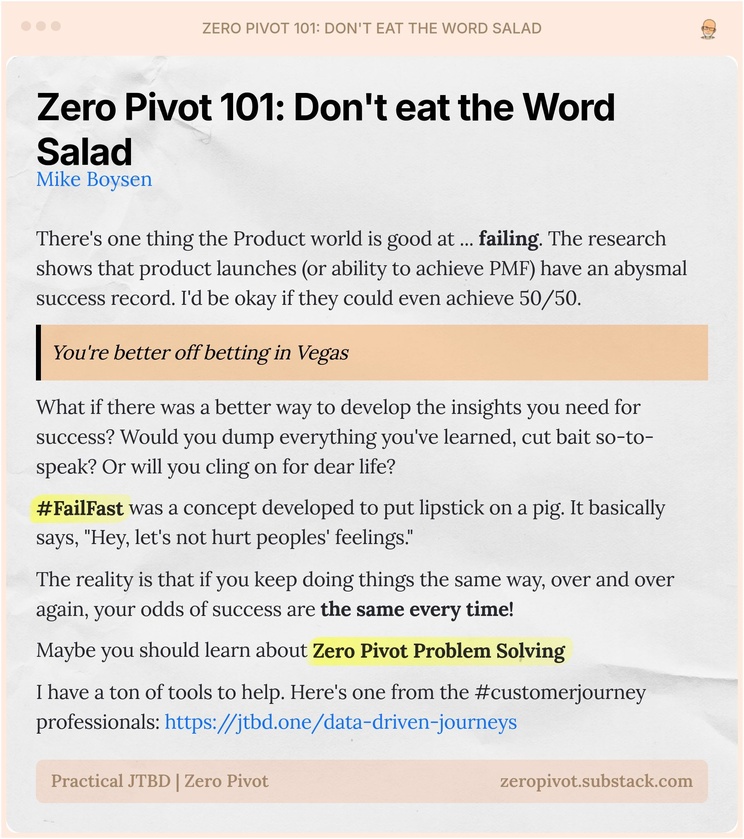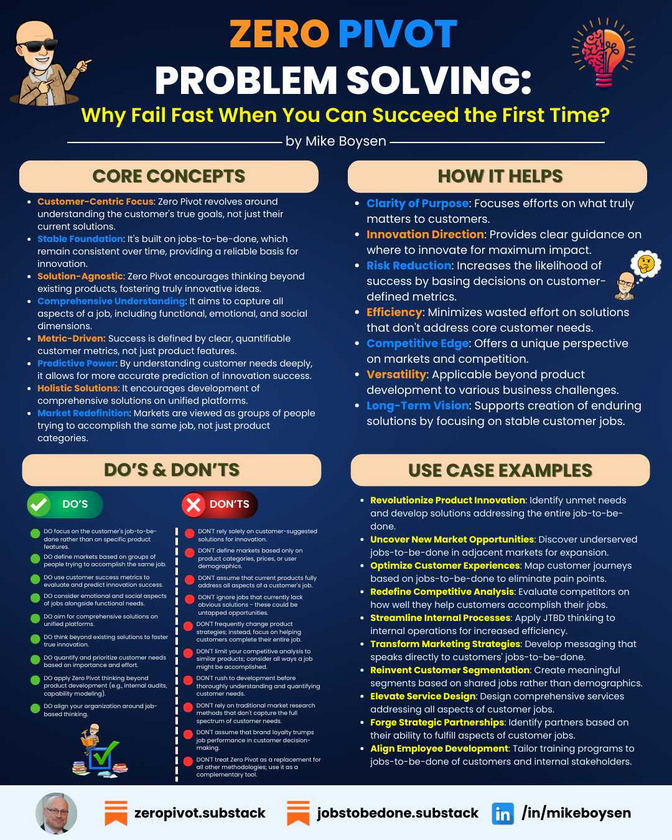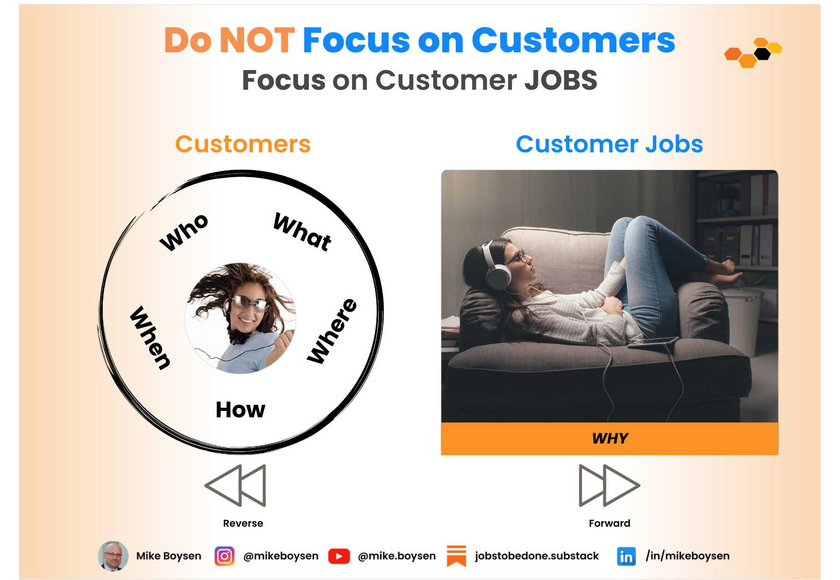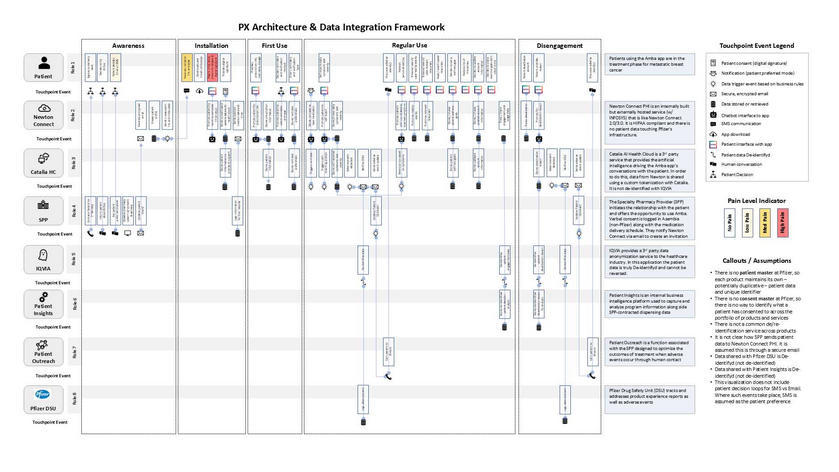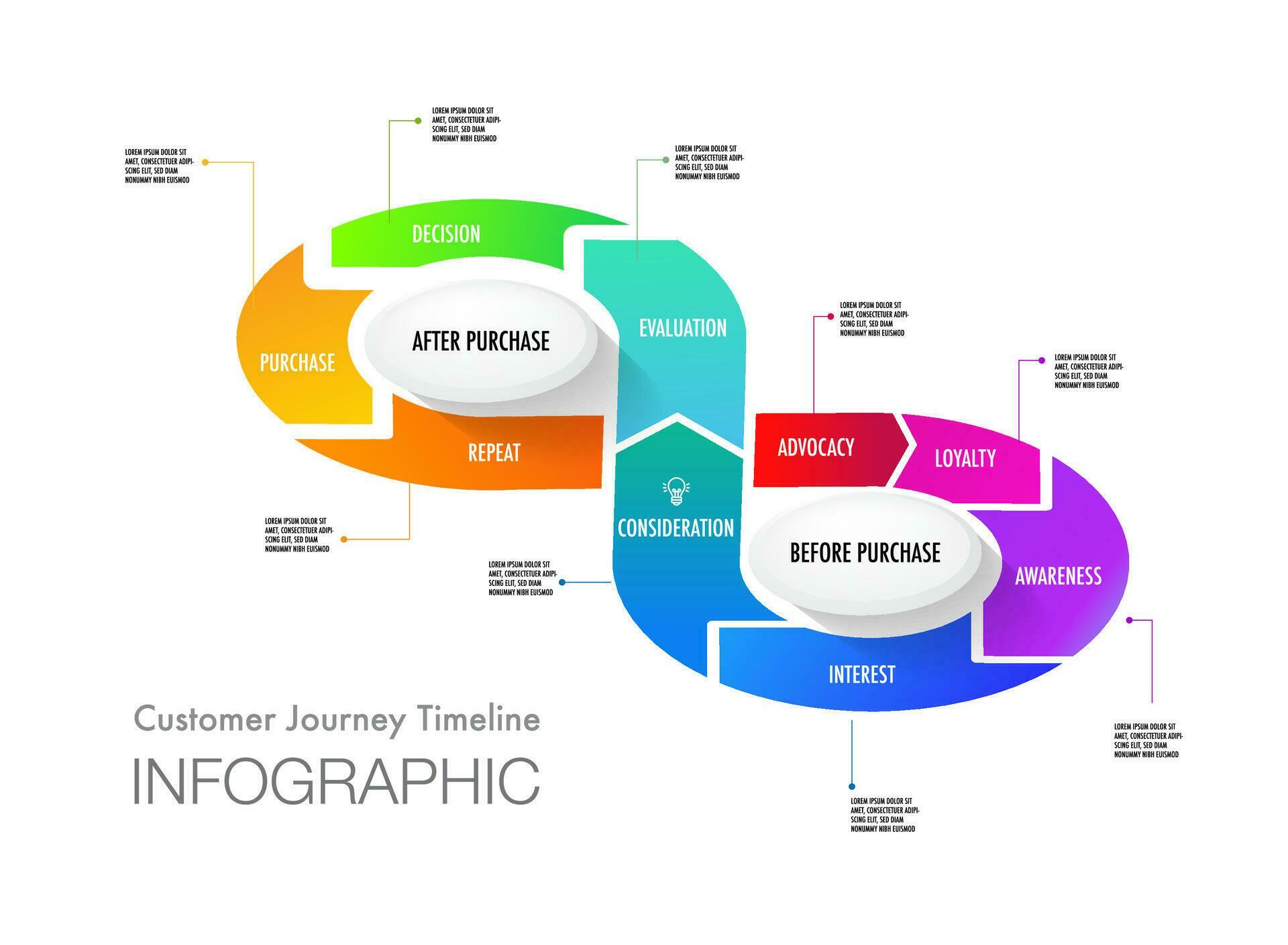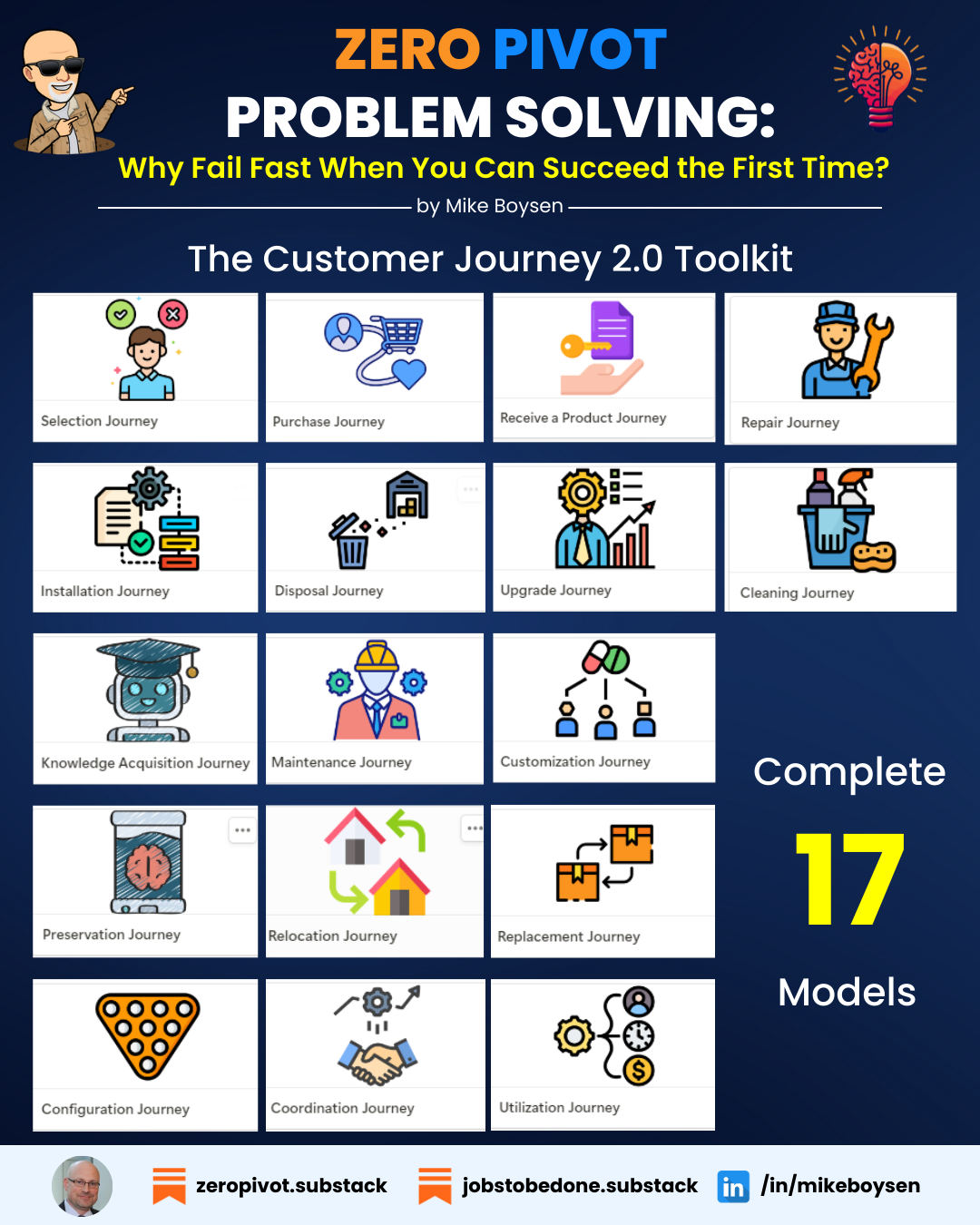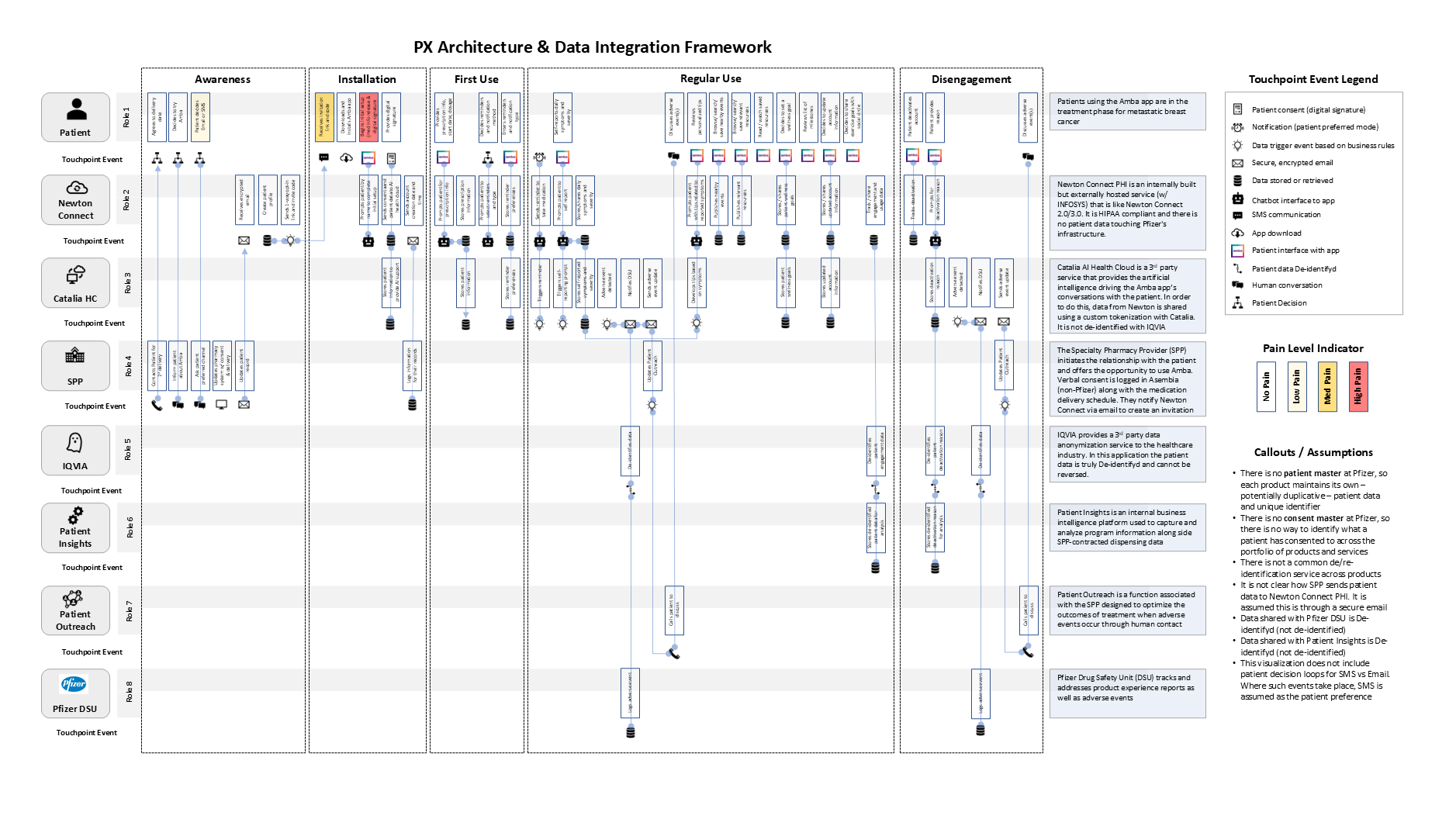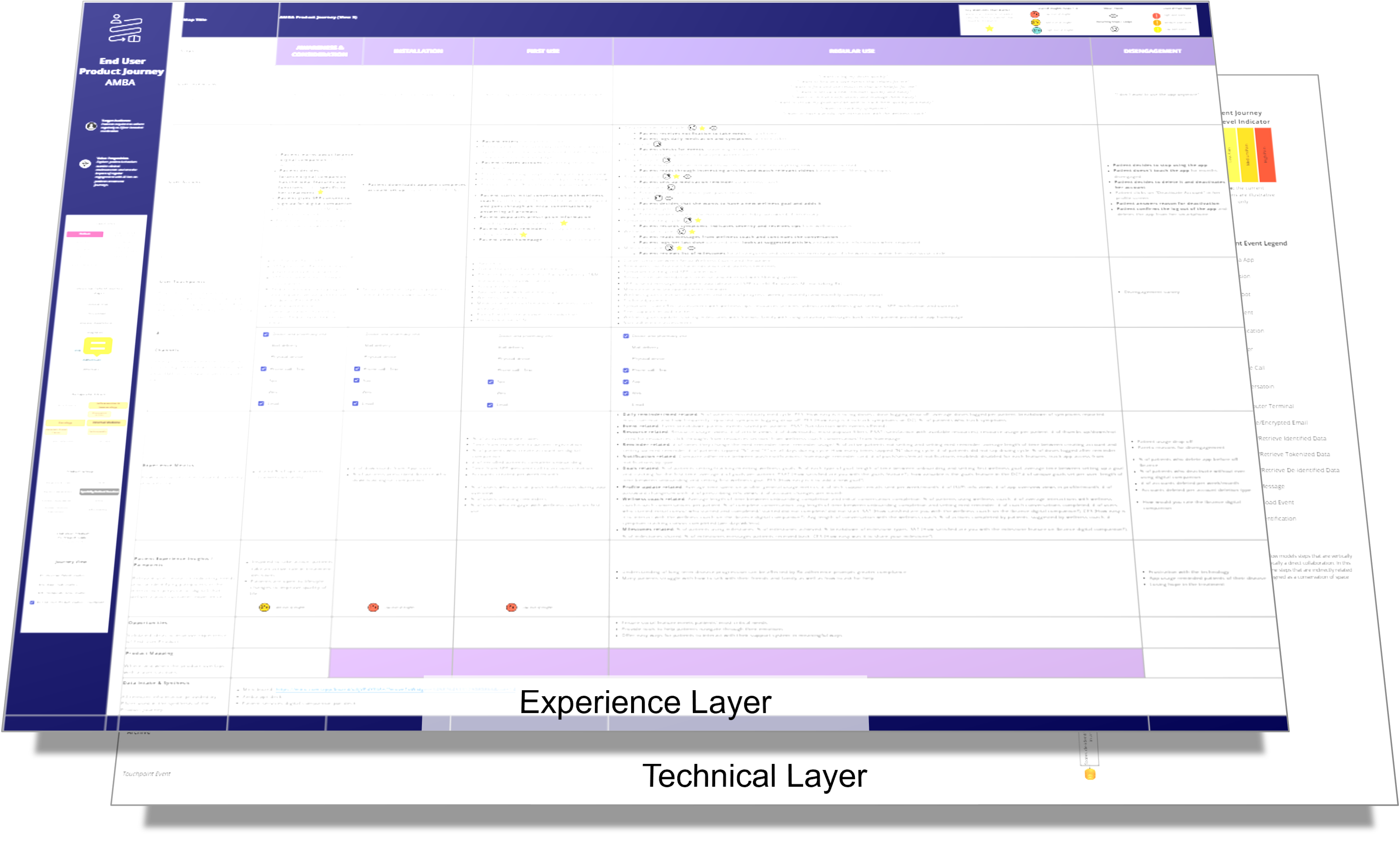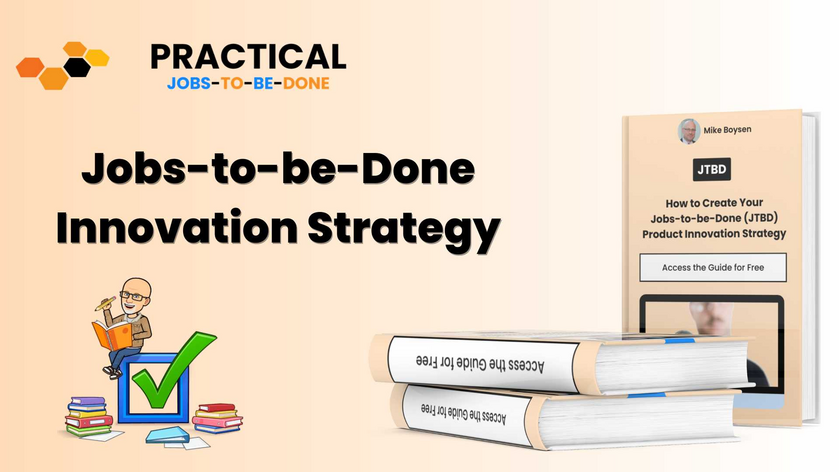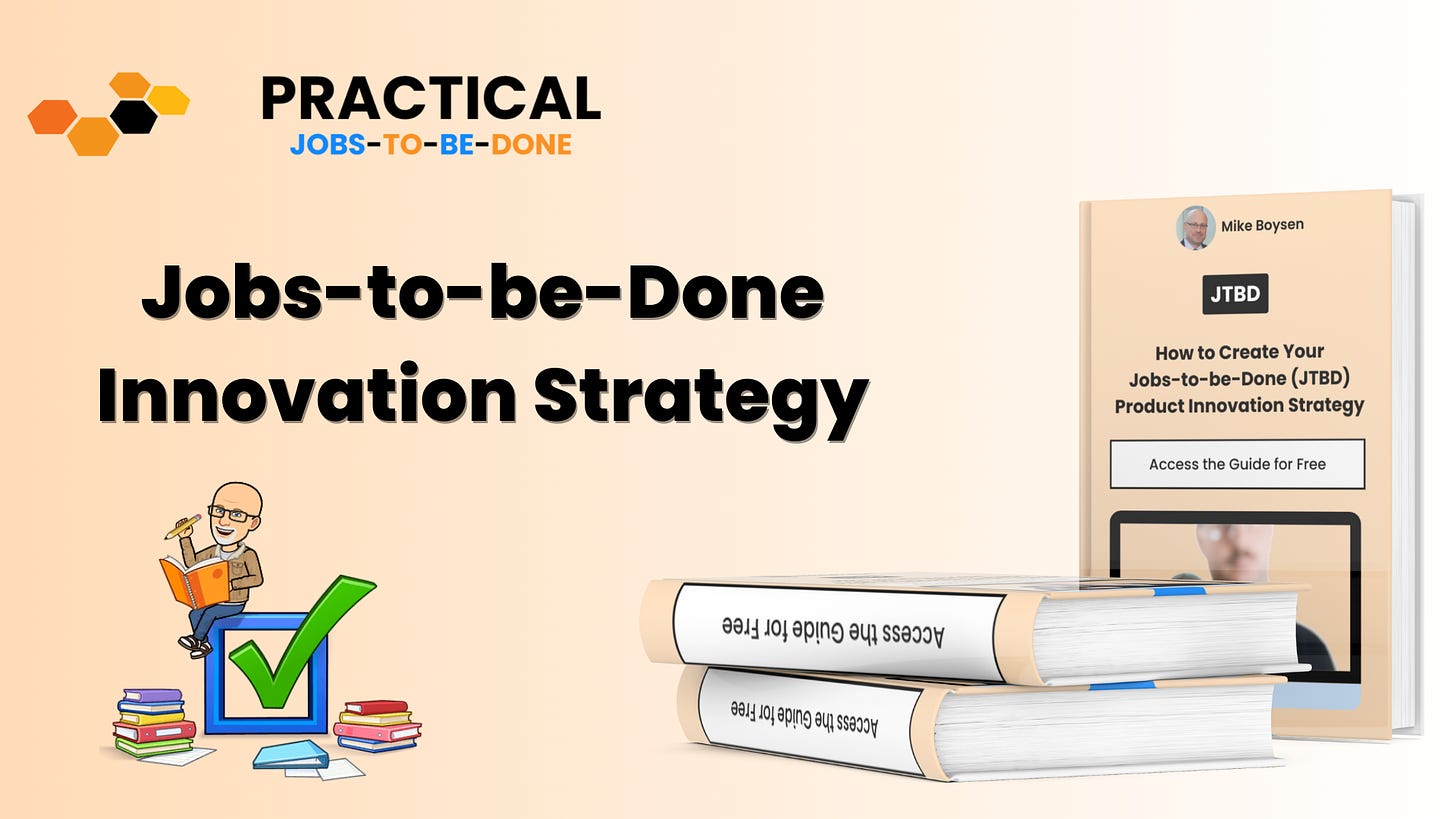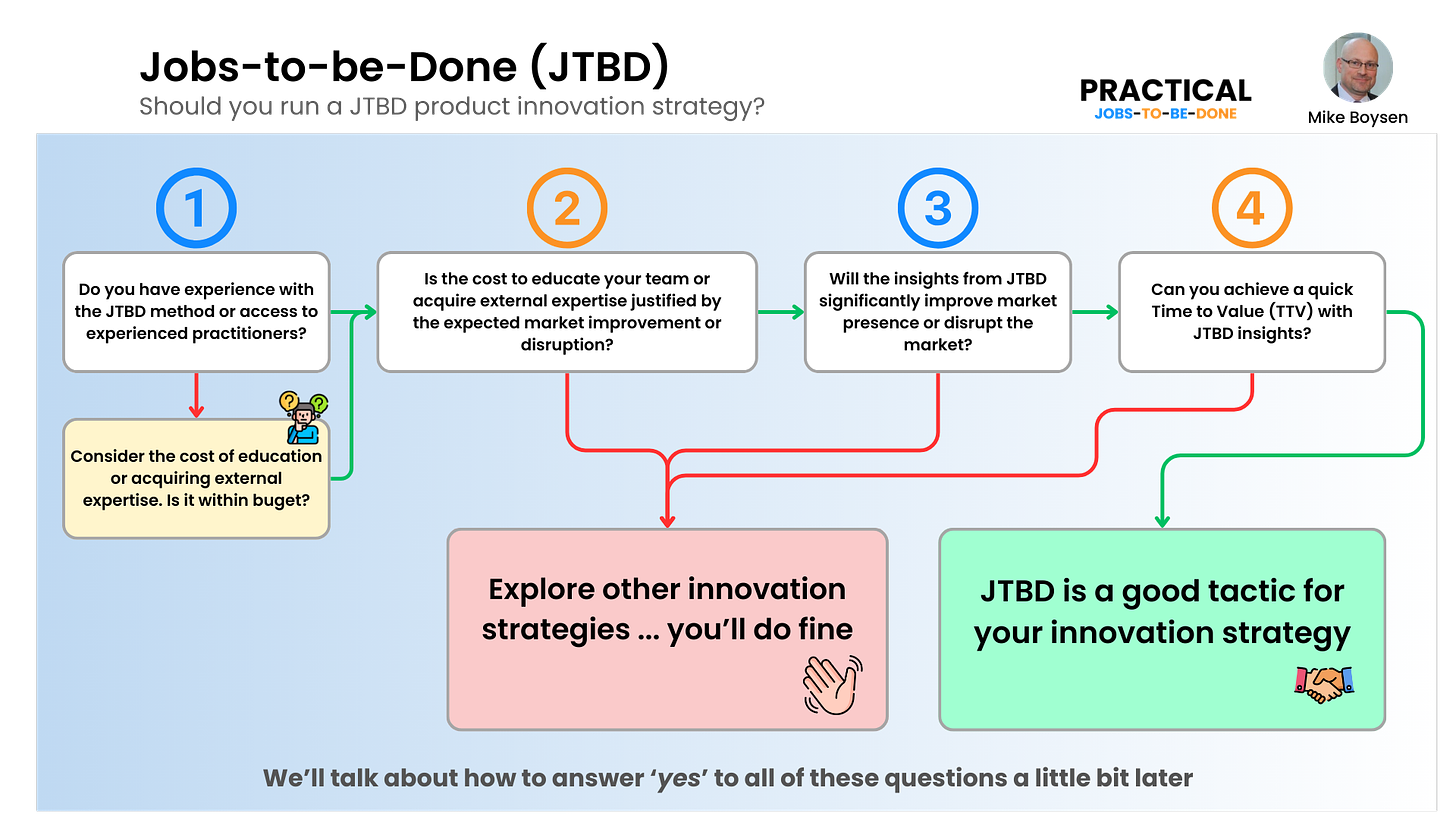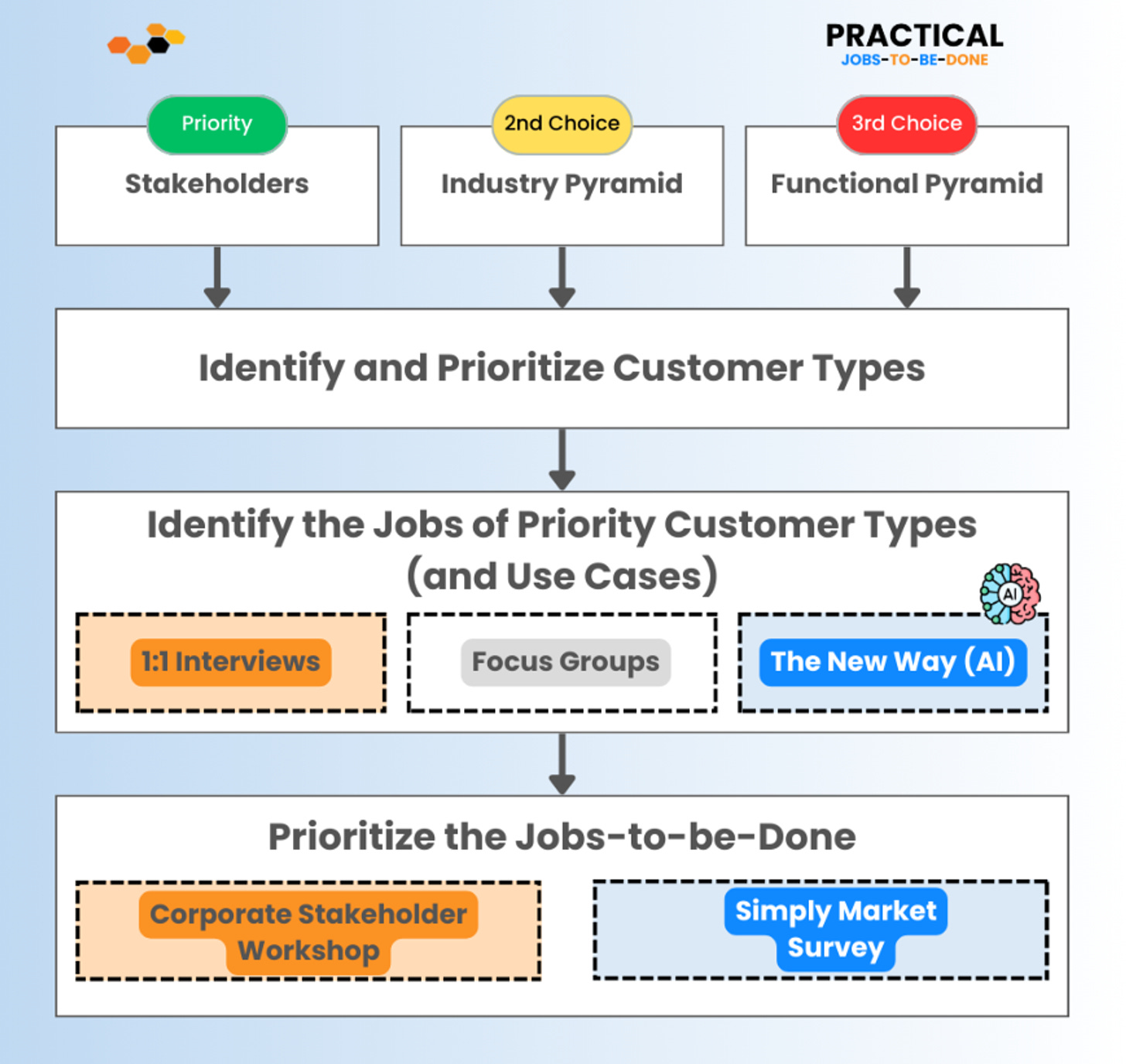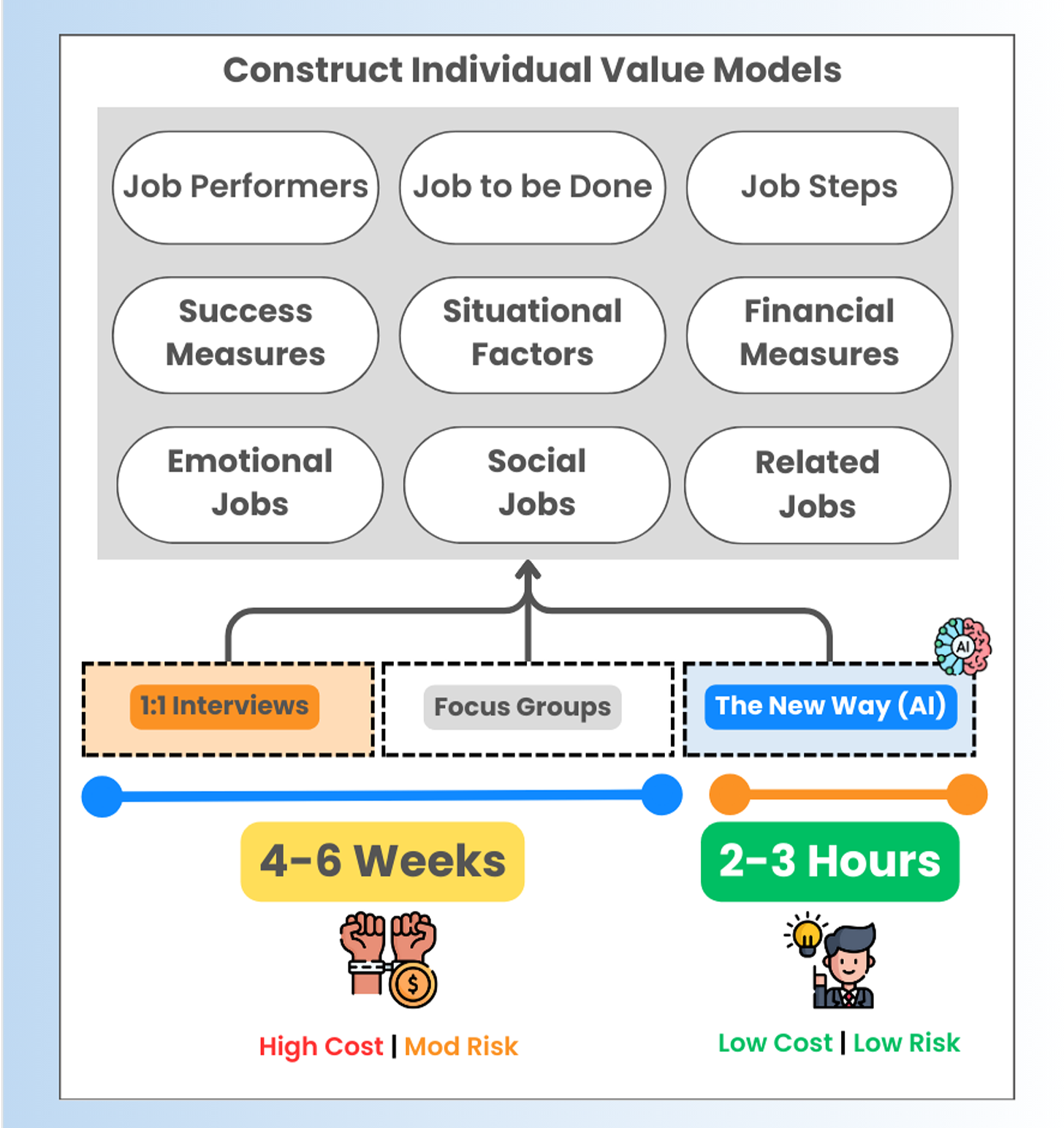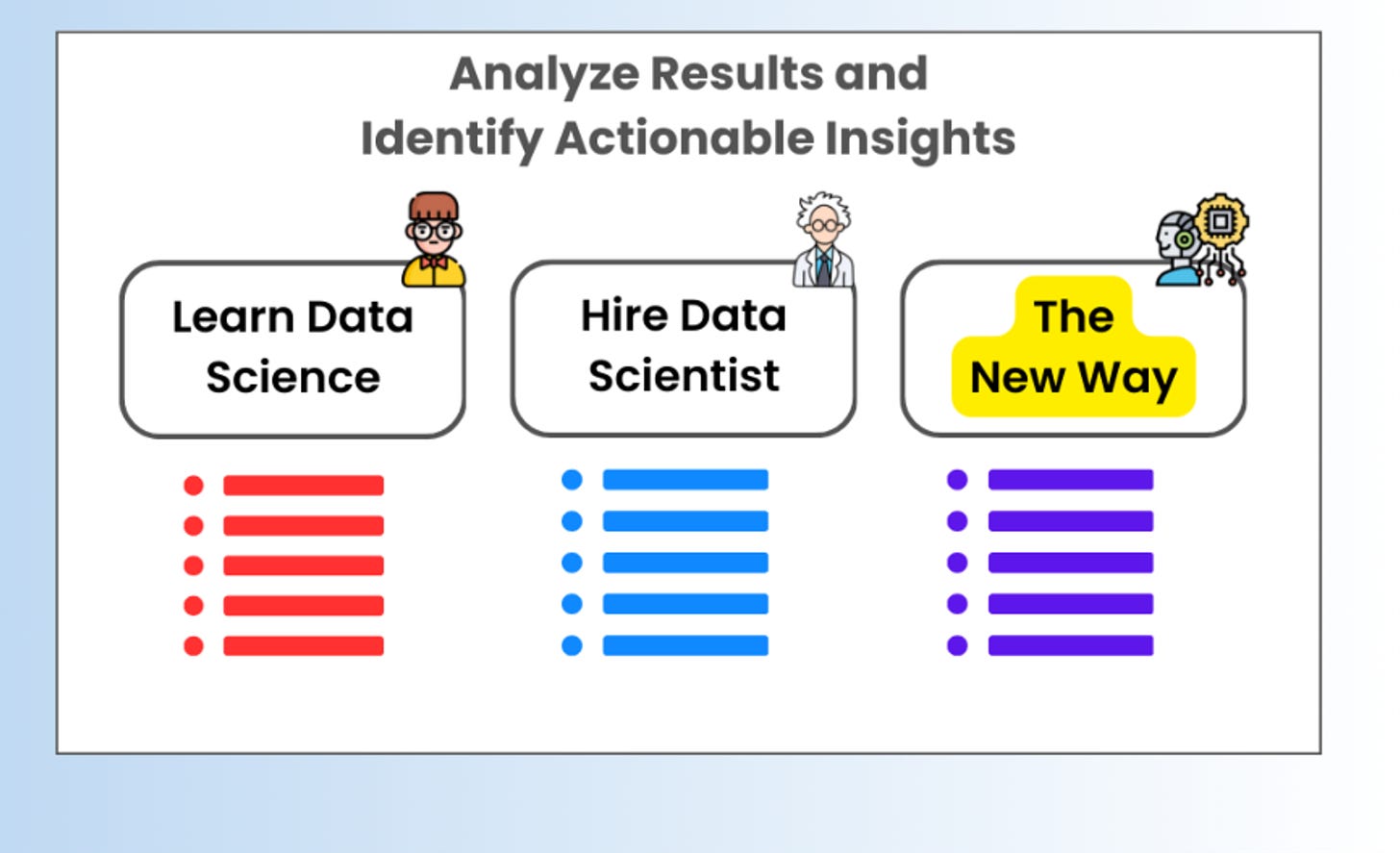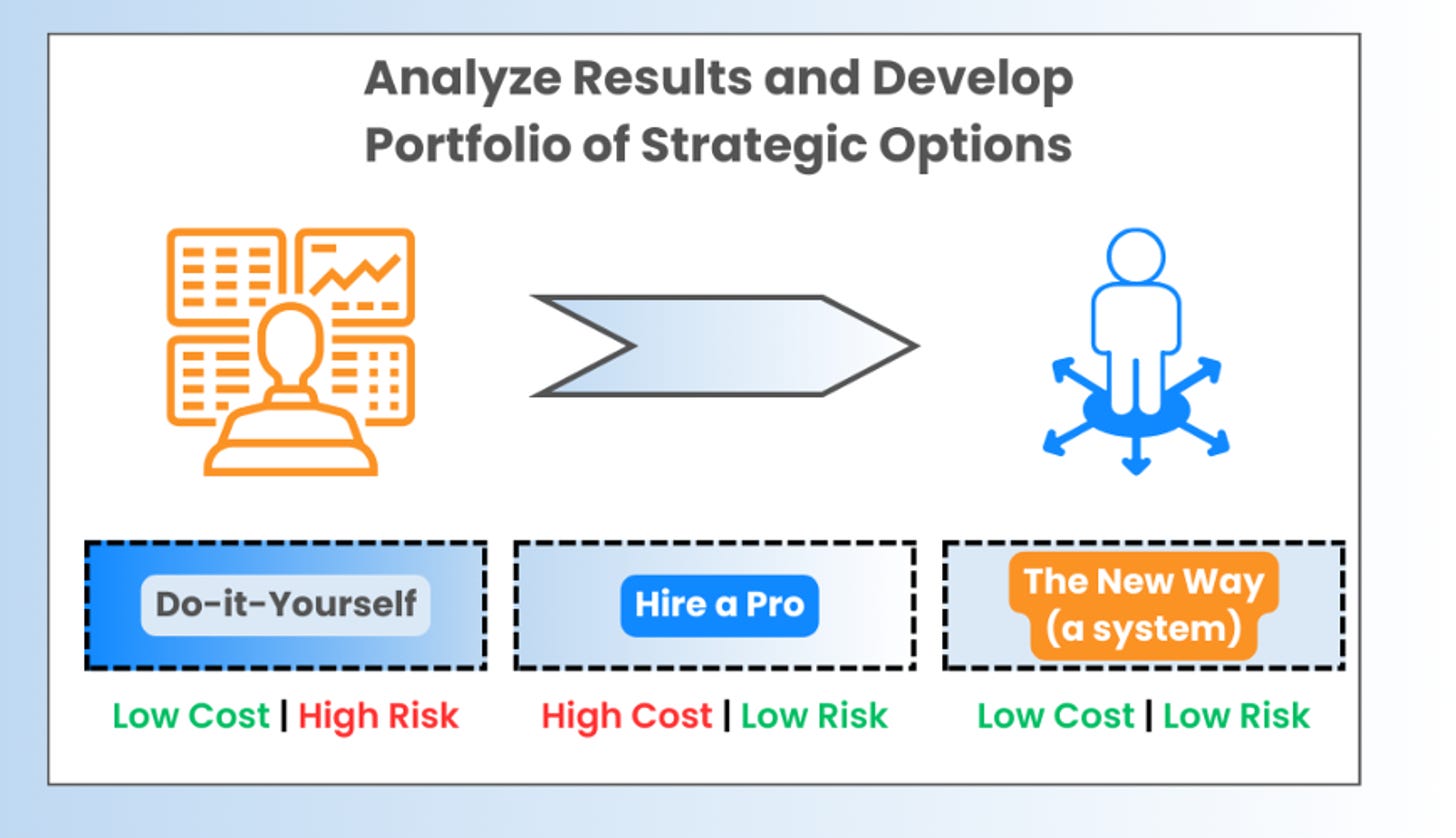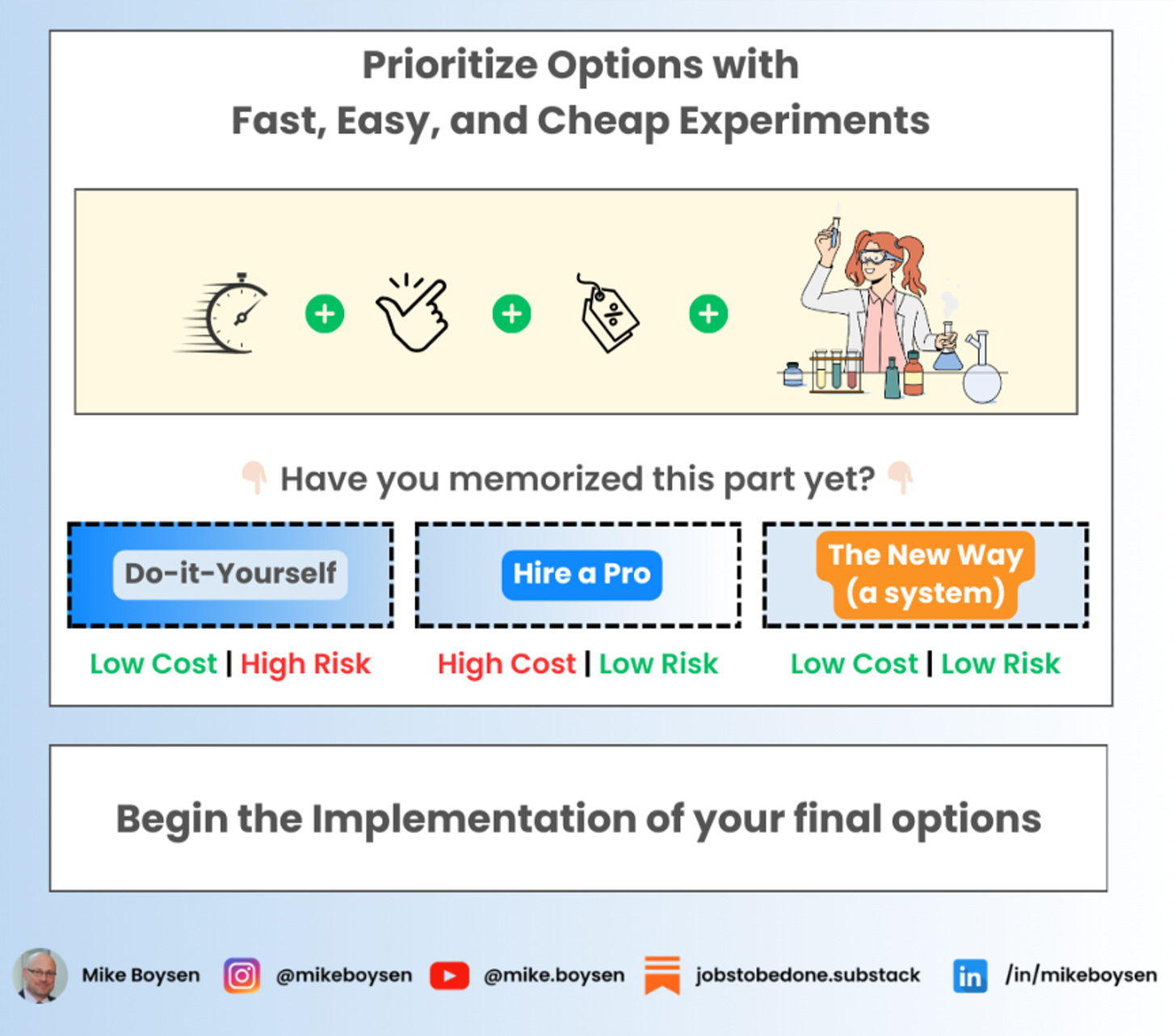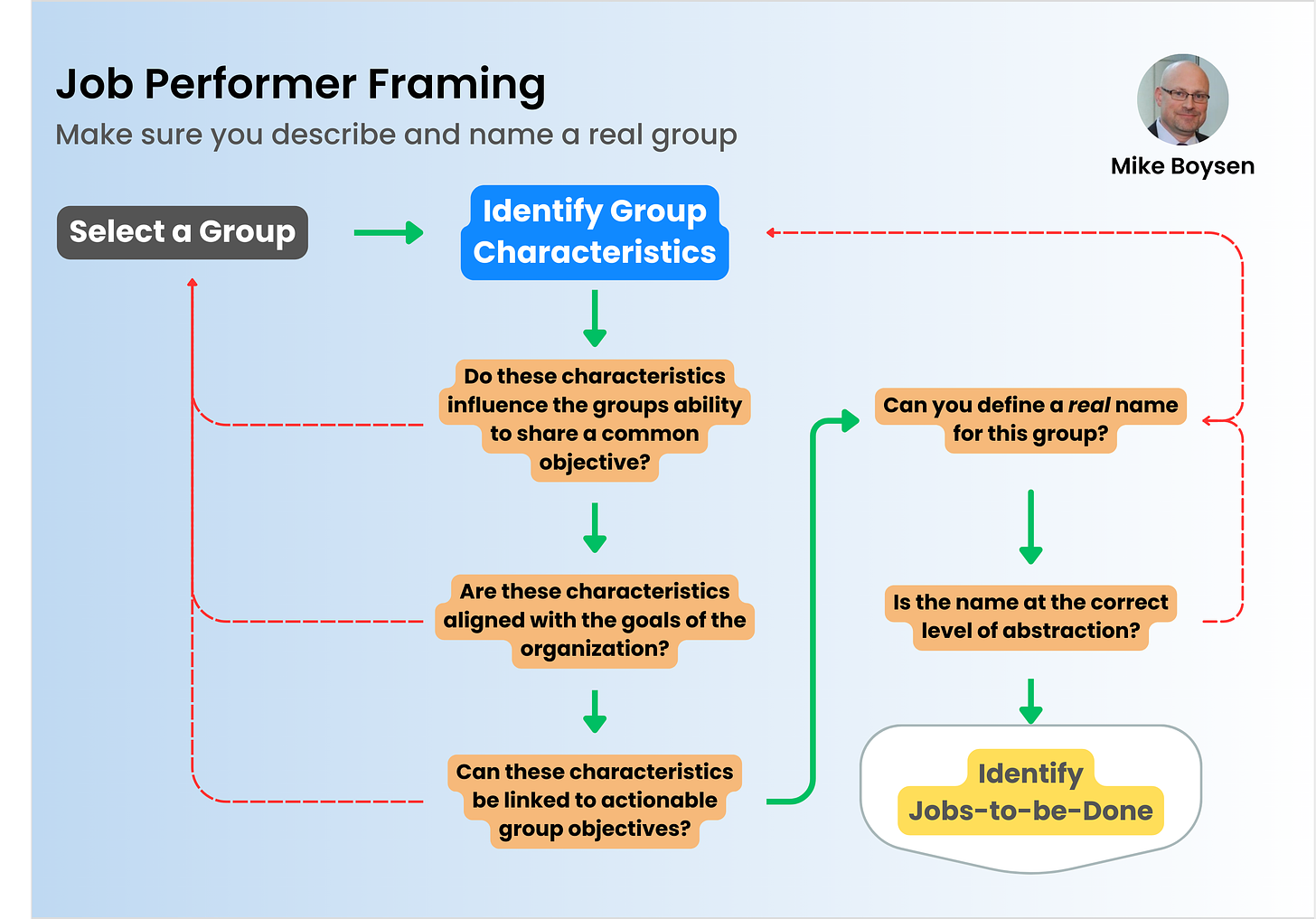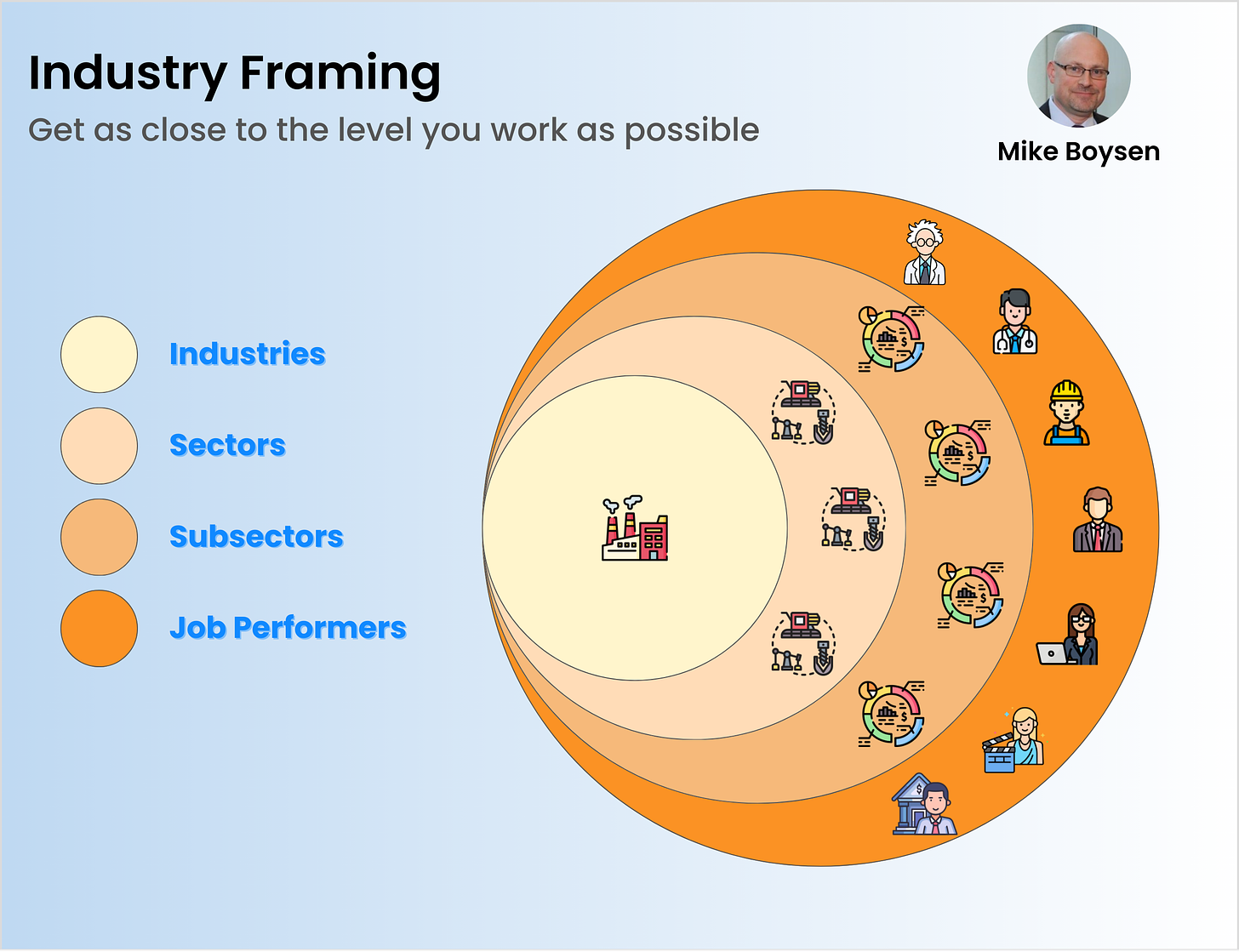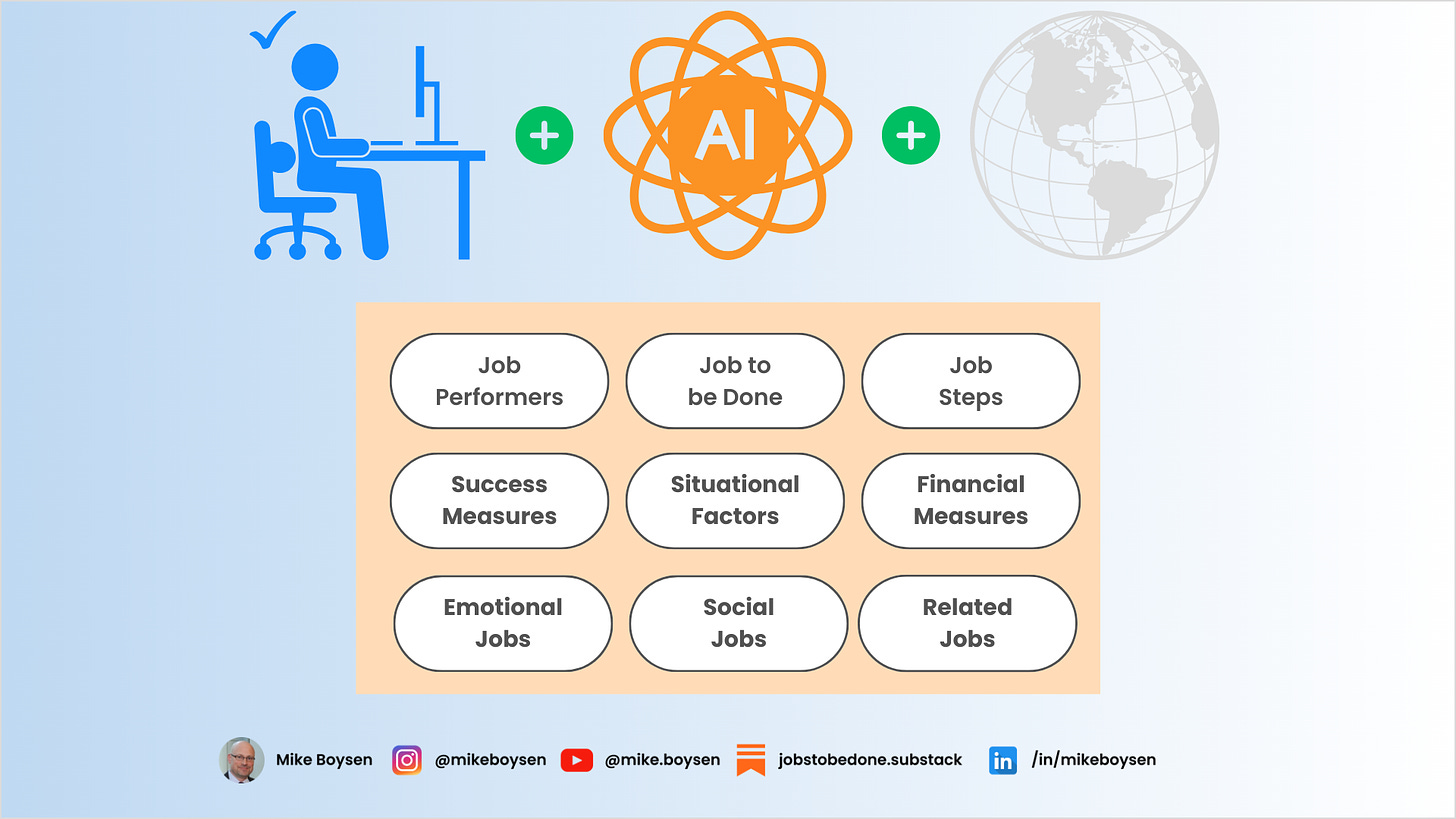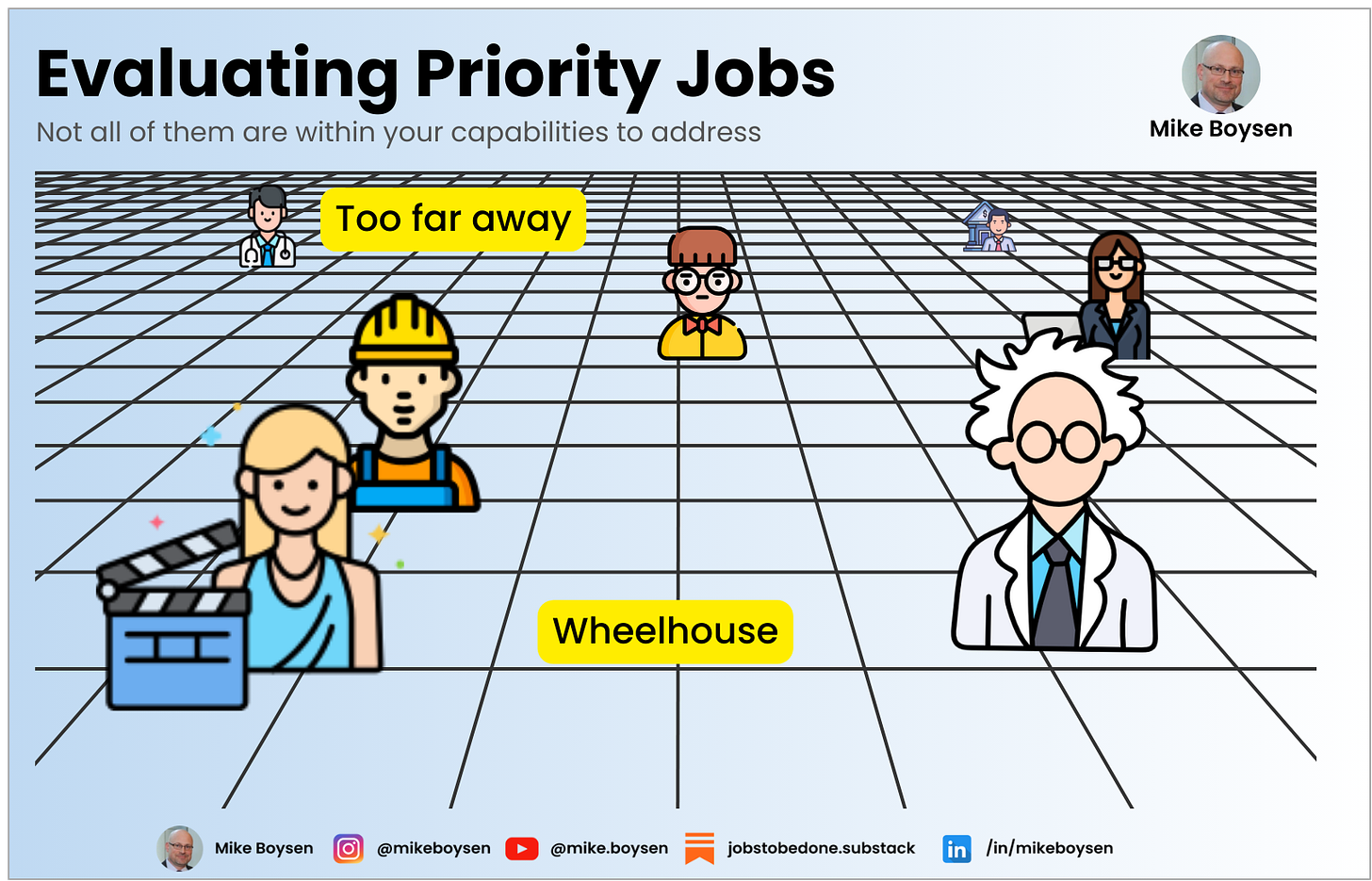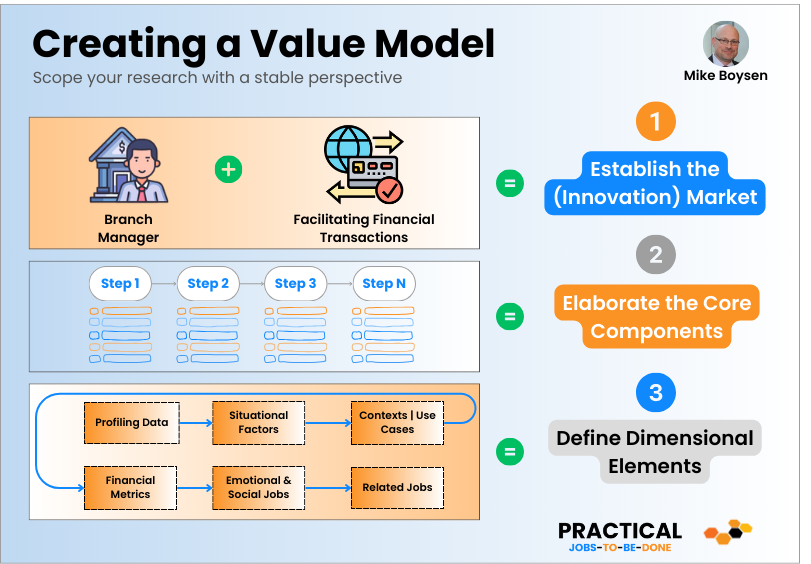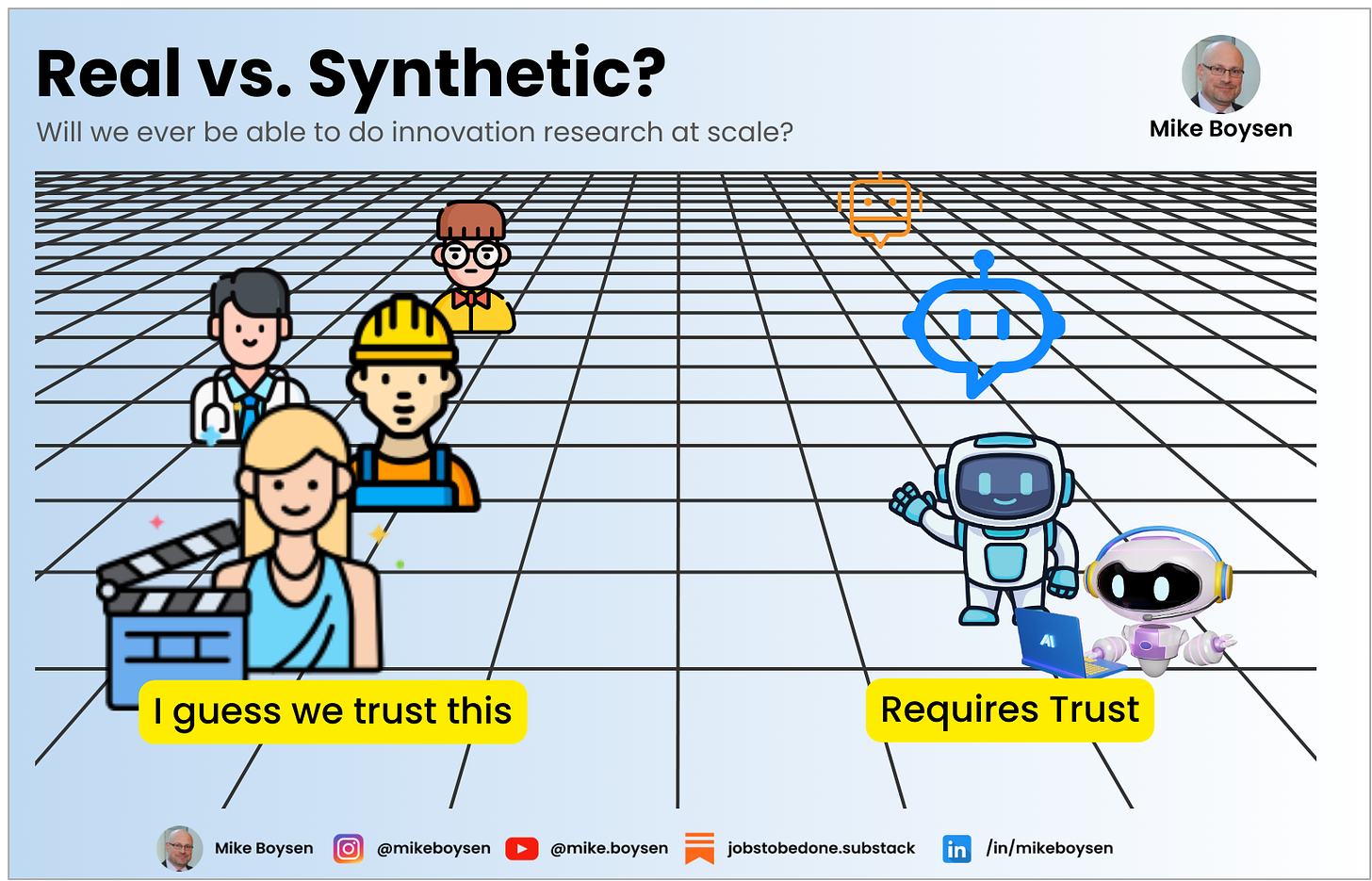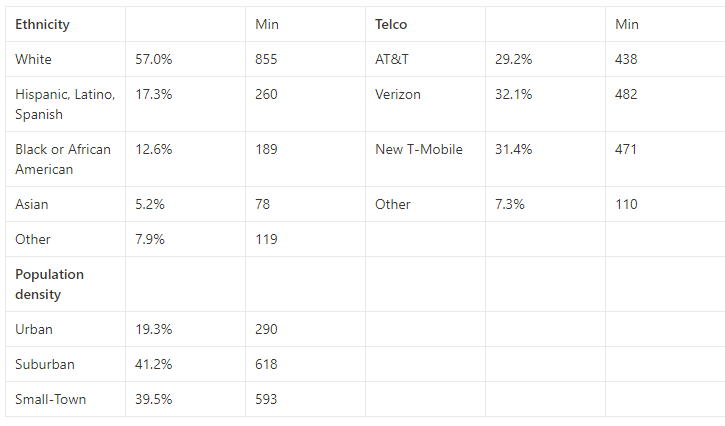Today I’m focusing on why it is so important that we’re able to generate both short and long lists of customer success statements. In order to ensure that we have enough content to rescope a study (on demand) is critical after we’ve done the qualitative research. The alternative is to demand that your expensive consulting firm go back and perform interviews all over again. 💰💰💰💰
Just forget about the interviews!
I used to hear “If there are more than 12-15 desired outcomes, there should probably be another step.” Not necessarily. There are more metrics because humans can’t capture every possible measurement vector. AI can. What the human is able to do is scan a large set, and filter down to only those that are relevant to the scope of the current problem and/or the level of fidelity needed to direct a solution effort. This becomes so much easier when you don’t have to worry about getting the format just right. That’s already done for you.
The most important thing real end users can do is rate the success statements. AI has shown that they may not be the best option to develop a complete set of them.
Using AI does more than simply fill in all the gaps, it allows us to consider different types of success that don’t necessarily conform to one person’s opinion. I have multiple versions of success statements, and I also have other concepts that I can produce on demand that can make the problem space simpler, and the research much less expensive. The quality comes from the coverage more so than going through the machinations of getting a single statement just right.
Using the old-fashioned approach, if scope the problem incorrectly, you’re going to pay the ‘price of correction’, or you’re not going get the answers to the questions you need to answer.
The solution to this problem is a catalog of options that allows you to craft a variety of quantitative research options over time without having to do discrete qualitative studies for each one! (💡) If that hasn’t been floating around in the back of your head when you’ve watched me output this content, I’d like you to think about that now.
Job: Obtaining Product Support
Many of you diehards have probably already read Lance Bettencourt’s book ‘Service Innovation: How to Go from Customer Needs to Breakthrough Services’. It covers how to use Outcome-Drive Innovation for service innovation. In the book he lays out a number of universal job maps, one of which is the job of obtaining product support.
He only supplies a single example metric for each step, but that’s okay. I’m going to generate a ton of them to demonstrate what it’s like to have a complete and gap-free database of customer needs statements (desired outcomes, customer success statements, whatever, etc.)
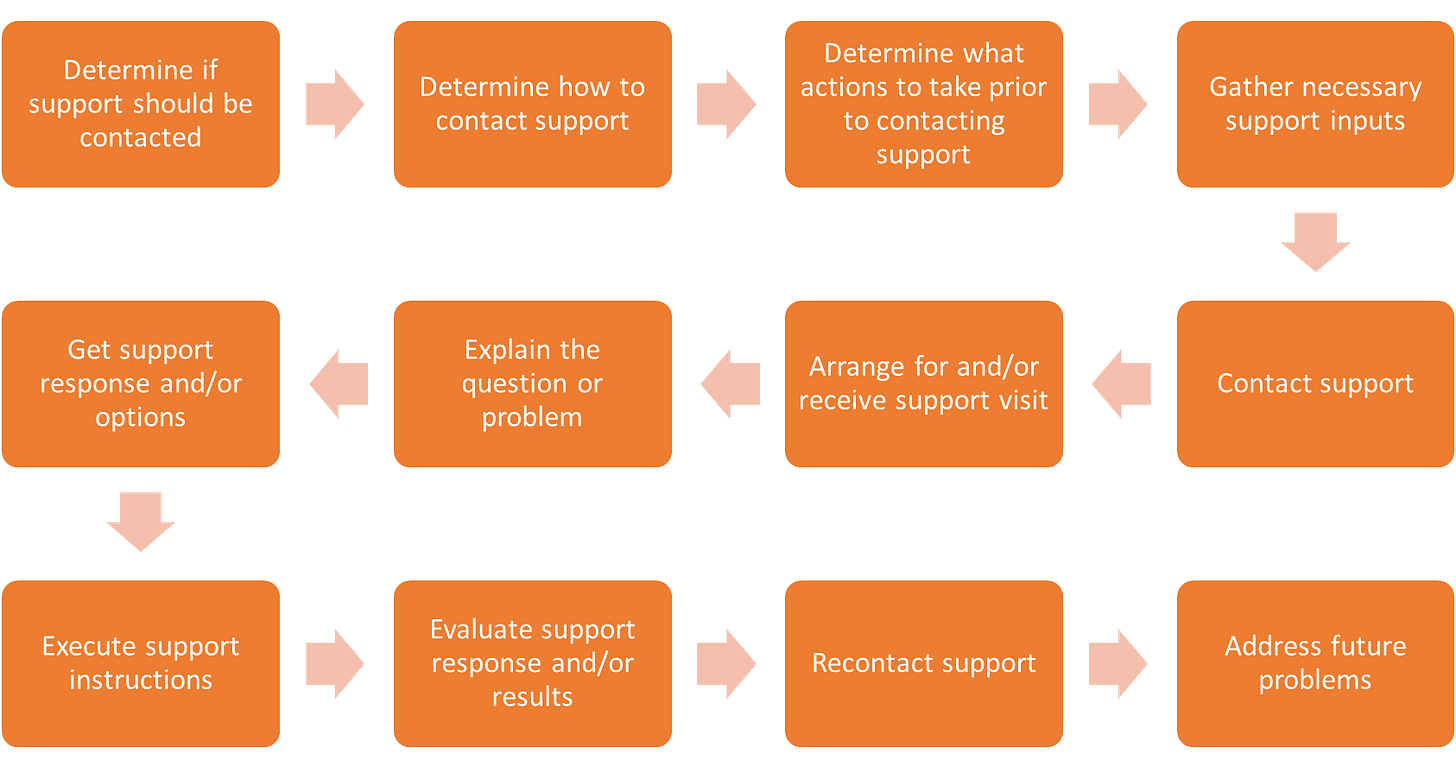
The original job map had loops and decisions, much like a process map, but I’ve made it linear here in order to conform more with the current standards. Something to note here is that there is a step for coordinating for onsite support (scope) which is a decision path that may or may not be relevant. I believe there is a distinct difference a support desk context (phone, chat, etc.) and field service (appliance repair, etc.) so the map should reflect the context and scope.
Being a universal map, we don’t need to worry about that too much.
Below is the map that I handcrafted by leveraging the 3 job maps I asked AI to produce for me.
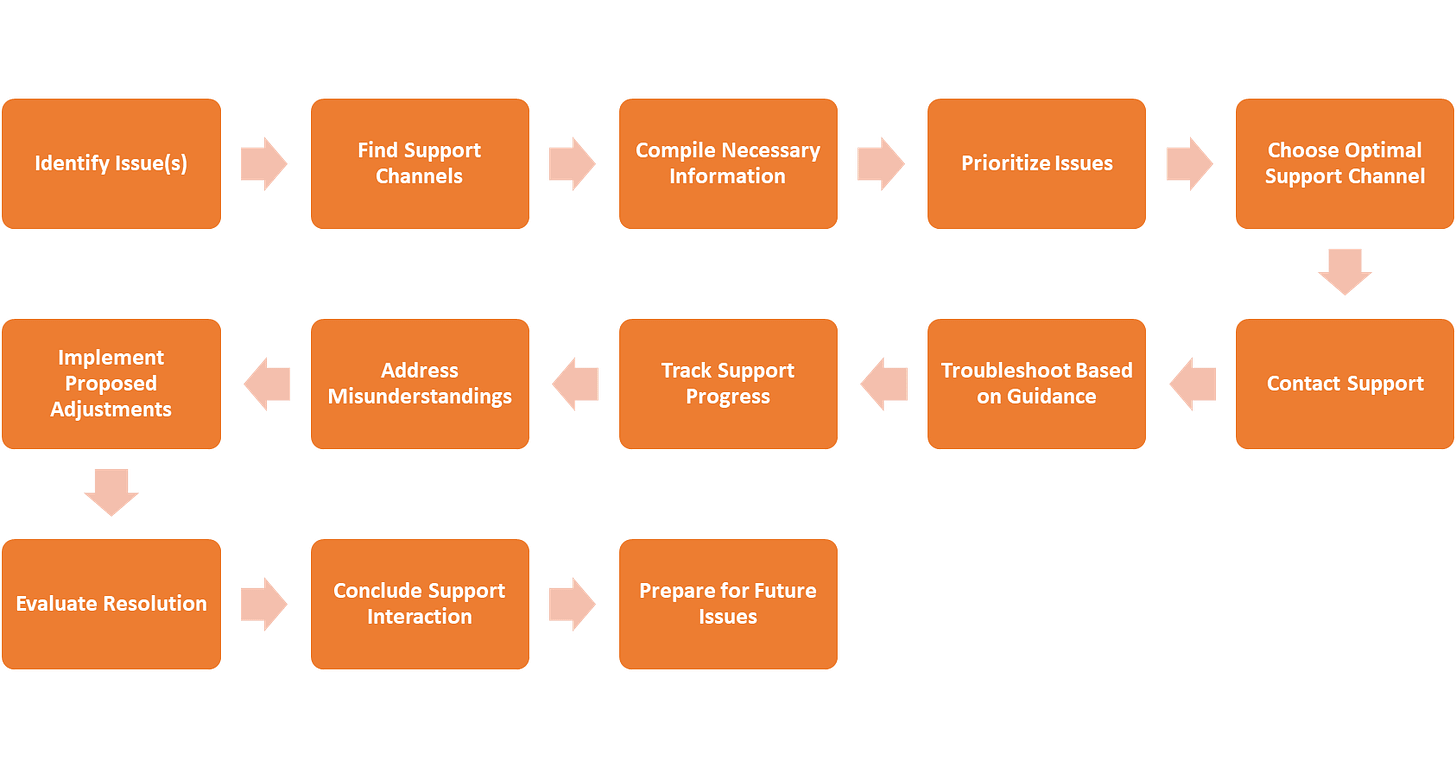
Difference #1
Step one in Lance’s map is a decision, mine is not. I’m not sure that it matters. Choosing the support channel is also a decision, however a lot of data has been collected up to that point, e.g., finding support channels, prioritizing issues (a decision journey), etc. In my example, the first step is to identify (or detect) an issue that might require support. I generated 15 success statements (arbitrary) that establish all the various criteria I might consider to determine urgency, frequency, and other facts. Near the end I have:
Minimize the time it takes to decide if the issue can be resolved independently or requires professional help.
That 👆 is the decision and everything leading up to it are the inputs to the decision. Again, everyone approaches this a little bit differently, and that’s Okay. This should highlight that there is no perfect job map, or perfect set of success metrics. As long as you are viewing the problem through a Job lens, you will get powerful results.
I’ve also excluded a context that would force us to focus on steps and success statements related to onsite support. In my mind, while it’s a similar job, the context demands a closer look at the coordination of resources around a destination, whereas a centralized function leverages their resources more efficiently.
If you spot something that’s missing (and I have) then more statements can be generated by simply asking AI to output more for consideration. I set this experiment to 15. Maybe I’ll try 25 next time. It’s that easy.
You can grab a copy of the catalog on Gumroad for free.
End the Analysis Paralysis
If you or your team is struggling with Jobs-to-be-Done, we’d like to help. We’re leading the way to a better innovation and product development process.
We’re here for companies who don’t want to, or can’t invest in Big ‘N’, or specialty consulting firms and their leveraged resource models.
We’re 20x faster and 10x less expensive than your traditional options because We’ve embraced modern tools and methods that can scale.
We’re not here to engage you with theatrics, We’re here to collaborate and systemize. It’s not about me, it’s about you.
Using our adapted approach to Jobs-to-Done - with a little bit of human experience on top - we can help you to get the insights you need in days and weeks without the need for an army of inexperienced consultants and analysts that add unnecessary cost and deliver static PowerPoint decks.
Qualitative Research - at the speed of light ✅
Quantitative Research - with dynamic leave-behinds ✅
Strategy Formulation - focusing on the top things you should do today ✅
You can reach me at [email protected]


